One of the most underrated gateways to Ria Formosa Natural Park, Olhão, is situated right outside Faro and makes for an incredible vacation spot.
There are amazing things to do in Olhão, Algarve, yet the atmosphere is somewhat more relaxed than in other areas of the Algarve making it a great place to stay for couples in southern Portugal.
A relaxed boat trip to the islands followed by a tranquil walk along the harbor accompanied by refreshing ice cream is the perfect way to wind down after a hectic period at work or long-term traveling.
After spending quite some time in Olhão, I’ve put together this guide on what to do in Olhão so you can create your perfect trip to one of the most charming cities in the Algarve.
Disclosure: This post may contain affiliate links. That means that if you make a purchase through one of those links, I will get a small commission at no extra cost to you.
Table of Contents
Things to do in Olhão
Boat trip to Ria Formosa Natural Park
One of the best things to do in Olhão is without a doubt to take a boat tour through Ria Formosa Natural Park to explore the islands and marine life. This is something I recommend packing into any itinerary even though you only have two or three days in Algarve.
Ria Formosa boat tours typically take you to one or two islands where you can have lunch at a restaurant, go for a walk, or chill at the beach. The most frequented islands are Culatra Island, Armona Island, and Tavira island, though the latter is a little further away.
During the summer months, you’ll most likely go for a swim from the boat too, and many offer snorkeling as part of the tour.
The natural park has some of the largest concentrations of both short-snouted and long-snouted seahorses in the world!
Boats leave from Olhão Marina and you can buy tickets directly there, though in the high season, I recommend booking in advance so you secure a spot.
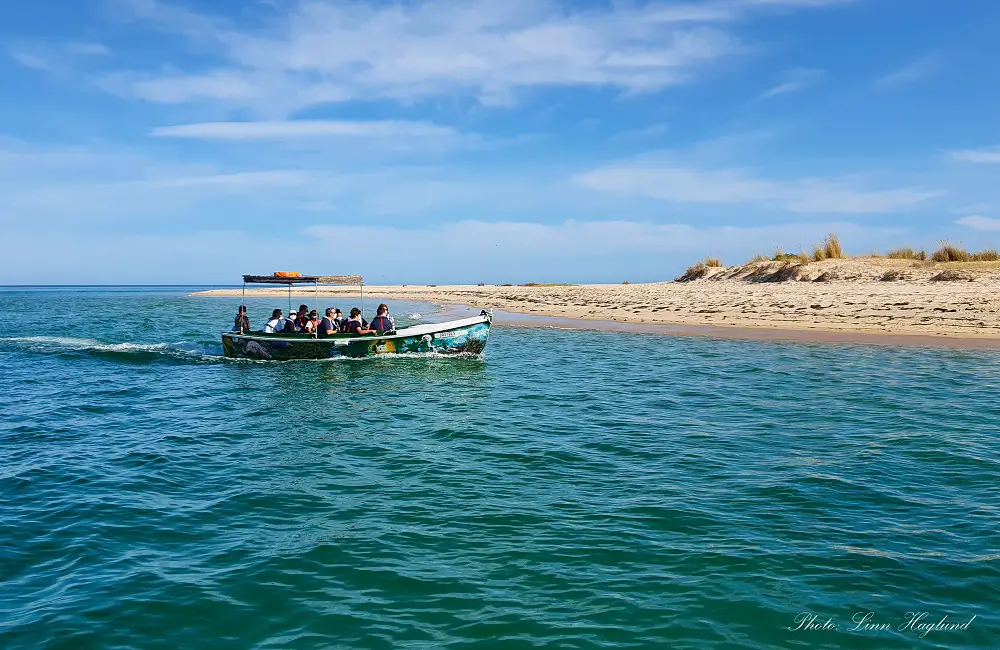
Ilha da Culatra
One of Ria Formosa’s mesmerizing barrier islands situated outside Olhão is well worth a visit. If you’re wondering what to see in Olhão, this is it!
The charming fisherman huts, now serving as holiday homes and homes for the few locals inhabiting the island, line the streets, only interrupted by restaurants and bars.
However, the little settlement that dates back to the 19th century only occupies a small corner of what is a protected natural area on the island.
Boardwalks take you across dunes and scrubland inhabited by different bird pieces and reptiles to endless white beaches on the outside of the island.
This is where most holiday goers hang out and relax on their day trip to Ilha da Culatra. But even so, you can walk up the beach to avoid the crowds that cluster around the sunbeds and umbrellas near the boardwalk.
Be an ethical traveler!
Stay on the boardwalk at all times and don’t walk on the dunes. The area is fragile to human interference and should not be stepped on.

Ilha da Armona
Ilha da Armona is yet another amazing barrier island in front of Olhão. Things to do on the island include walking around the dedicated paths across the dunes, relaxing on the beach, and wandering the streets of what used to be a fisherman settlement.
Today, Ilha da Armona is the most popular island in the natural park for tourists to stay the night. Holiday homes line the paved streets and you find all the needed facilities on the beach, which is one of the most beautiful Algarve beaches.
The around 50 people that live permanently on the island live mainly on fishing and tourism. Though tourism is important to the island, it’s even more important to practice sustainable tourism.
So do your part in respecting the regulations of the natural park, don’t step on protected areas, and respect the locals.
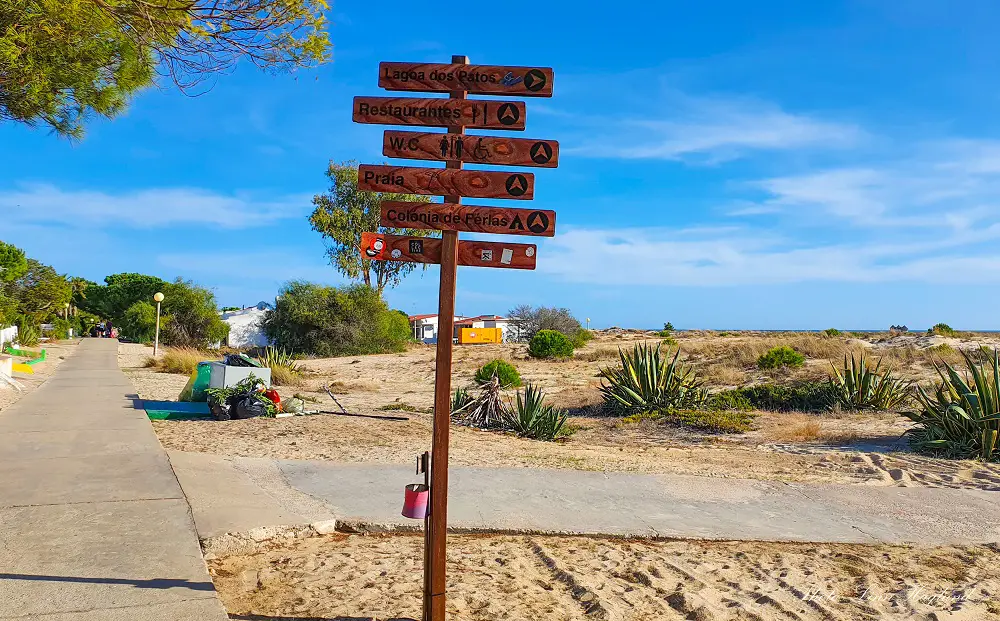
Ilha do Farol
Ilha do Farol is actually a part of Ilha da Culatra. Strangely set on the same island (as the name indicates it’s its own island – Ilha meaning island in Portuguese, but on the other side of the Culatra settlement.
This part of the island and its community is named after the white and red lighthouse, Cabo de Santa Maria. It’s said to be the oldest lighthouse in Portugal, first operating in the mid-1800s, though it underwent restorations in the mid-1900s.
Also on Ilha do Farol, you can rest for hours on the astounding beach that reaches all the 6 kilometers across Culatra island.
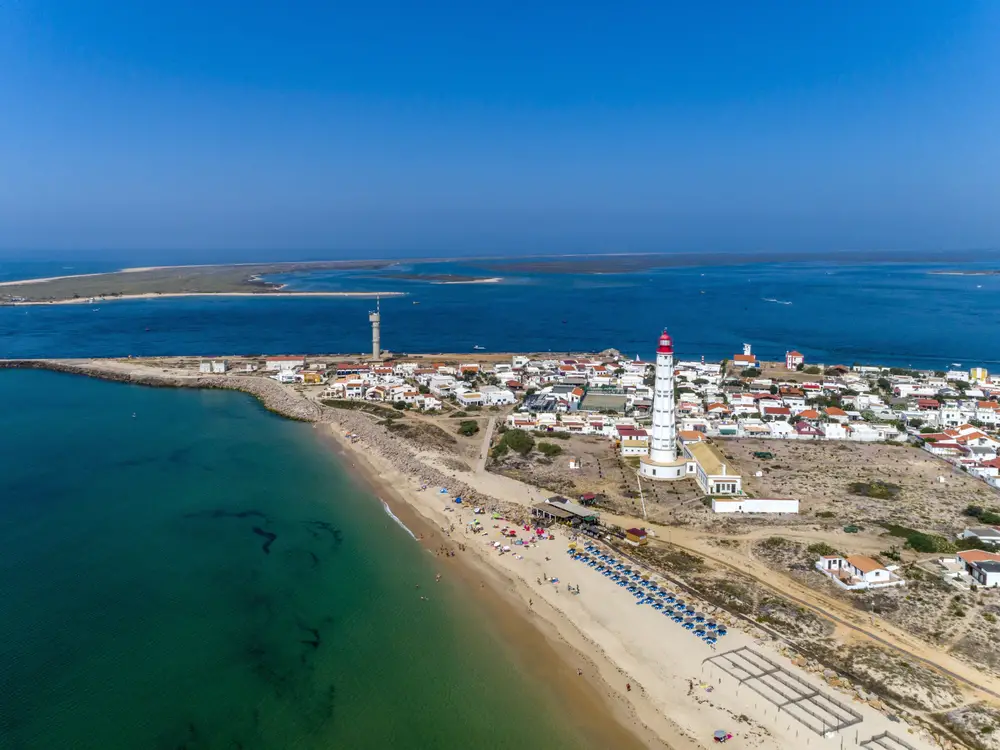
Also in Ria Formosa Natural Park
Quinta de Marim
Quinta de Marim includes an educational center and is Ria Formosa’s headquarters. Situated only 3 kilometers outside Olhão city center, it’s the perfect place to spend a day – or at least a few hours.
Inside the protected area, you can walk a nature walk taking you through woodlands, mudflats, salt marsh, coastal dunes, and freshwater lagoons.
Contrasting to the busy Algarve most travelers experience, this is a tranquil experience, accompanied by a multitude of different birdsong.
Due to the unique ecosystem, there are also several vading birds to be seen, among them the purple gallinule. But also flamingos can be seen in this area.
Points of interest are the only ancient tide mill that is left from the once 30 that were operating in the natural park, and the remains of five salting tanks from Roman times.

YOU MIGHT ALSO LIKE:
Enchanting things to do in Tavira
Most picturesque towns in the Algarve
Stroll along the marina at sunset
Olhão Marina is a wonderful place to spend relaxing evenings with the light sea breeze and golden light reflecting in the calm water. Especially Algarve’s winter sunsets are magical.
There are green parks along the promenade where you can relax on a bench before the sun’s awe-inspiring color show begins.
The setting with the sailboats, the scent of saltwater, and the sunset reflecting in the water are hard to beat.
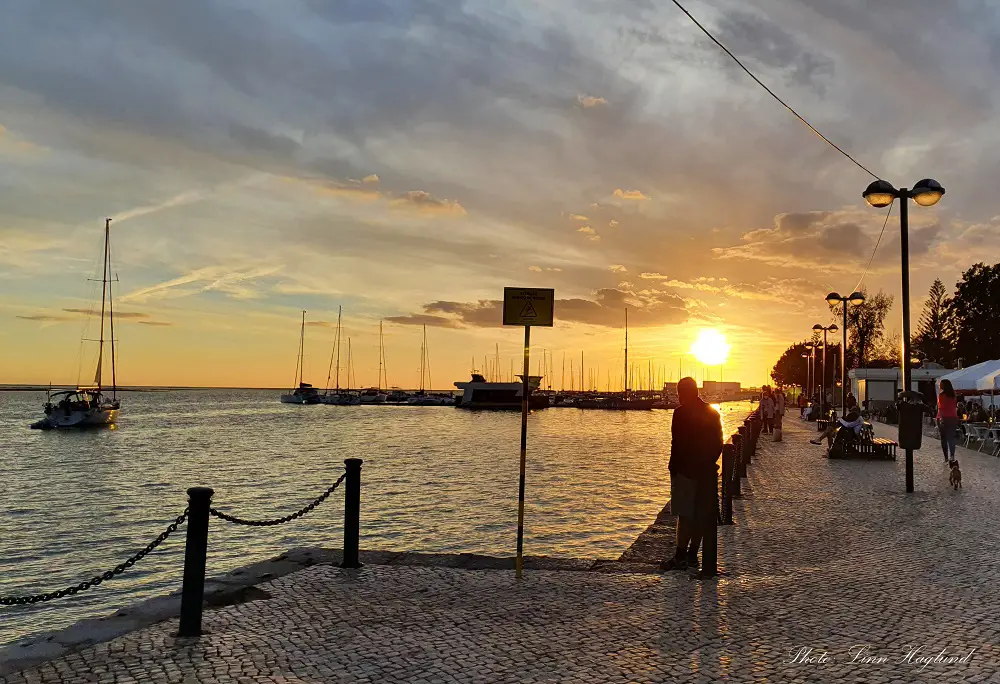
Go back in history through Olhão’s murals
Covering the walls of the Largo and Rua da Fábrica Velha, on the circumference of Barrio do Levante, you’ll be surprised by magnificent wall paintings uncovering Olhão’s history of fishing and canning.
It was the municipality that started the project of making something out of this part of town that was falling apart.
They hired the renowned urban street artists Asur (Dgiphi), and The Satori Artistic Association’s Kaset, Gnose, and Pedro Mistic who painted these walls based on old pictures from the Municipal Archive of Olhão.
This means that the people on these walls are actual locals to Olhão and some of them, still alive, can recognize themselves in the paintings. No wonder these walls stand close to the local’s hearts.
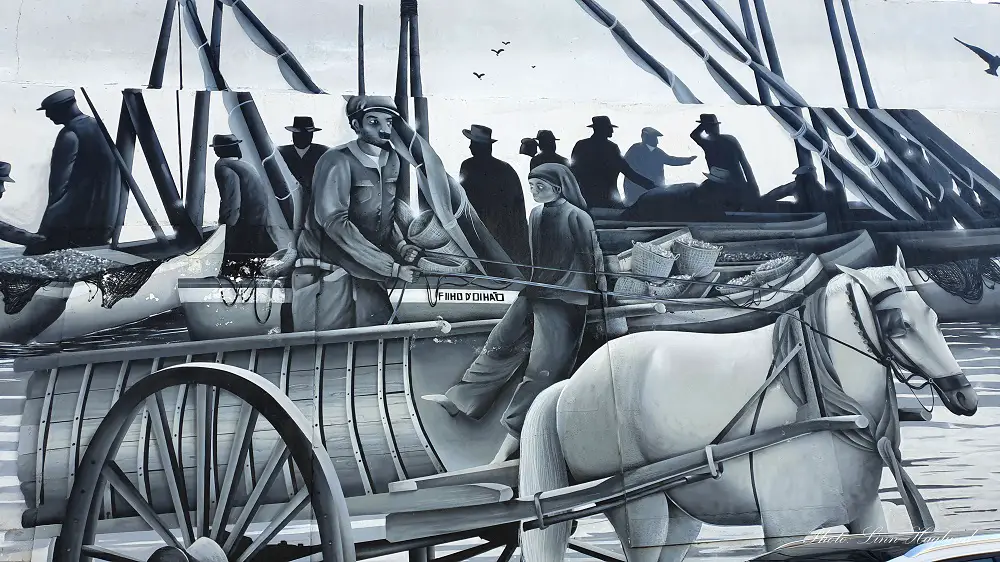
Igreja Matriz de Nossa Senhora do Rosário
If there’s one church you have to visit in Olhão, it’s Igreja Matriz de Nossa Senhora do Rosário on the Praça da Restauração Square (across from the Municipal Museum.)
The baroque church was opened in 1715 and was funded by the local fisherman’s guild. It was built for Olhão’s patron saint, Our Lady of the Rosary – which is honored with a beautiful fresco of the saint.
Traditionally, the fishermen’s wives would come here to pray for their husband’s safe return from sea.
First 7 years later, the bell tower was ready, where you now can climb to the top for sweeping city views.
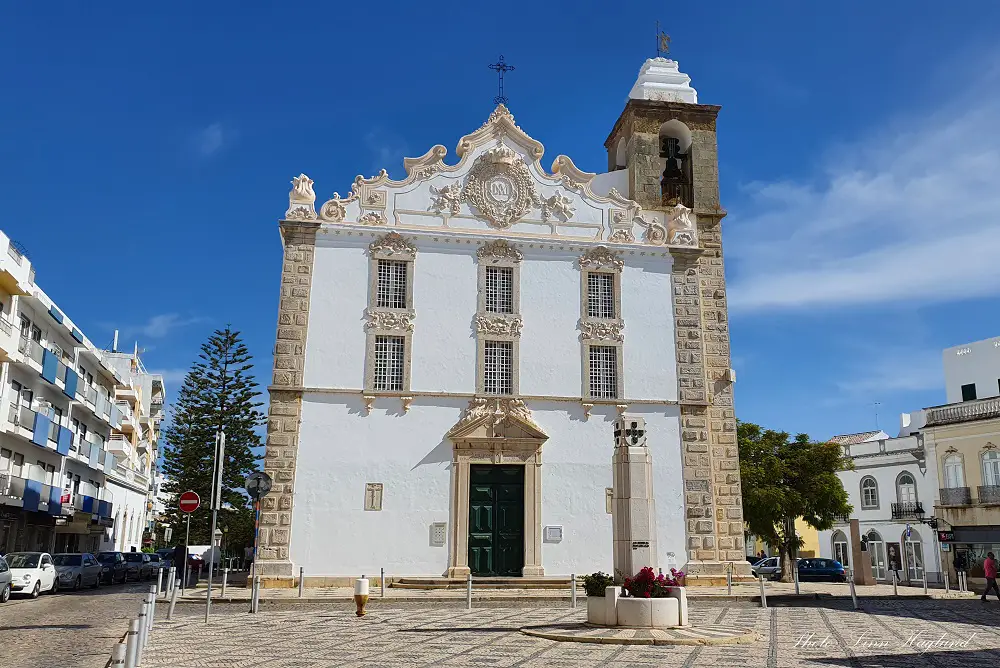
Explore the Bom Sucesso fishing boat
Docked right in front of the Mercado de Olhão is one of the city’s most significant historical attractions. The modest green, black, and white Bom Sucesso fishing boat.
Back in 1808, the original ship sailed all across the Atlantic with 17 men to inform the exiled Portuguese King, João VI, that was in Rio de Janeiro, that they had pushed out Napoleon’s forces.
As a result, Olhão was granted a Royal charter and the town became a recognized fishing port and center for canning on the Algarve – and most importantly, independent from Faro.
The replica of the original vessel was built to commemorate this important happening and in 2008, it was taken on a journey to celebrate the 200-year anniversary of the event.

Museu Municipal de Olhão
The Museu Municipal de Olhão, once the headquarters of the Compromisso Marítimo, which supported fishermen and their families is now the most important museum in the city.
Today, you can explore three different areas of Olhão’s history. One part is dedicated to archeological finds from prehistoric times through Roman times, until the Moorish rule.
The second part takes you through the history of salt extraction on the Algarve, and the final part is all about the importance of the sea in Olhão’s history.
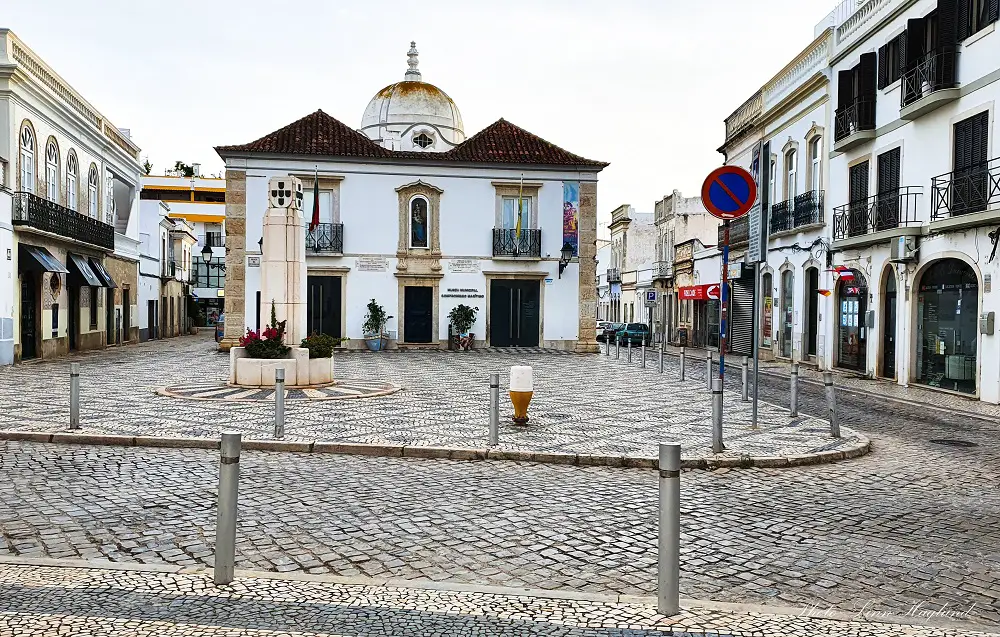
Visit the Mercado de Olhão
The two red brick buildings that make out the Mercado de Olhão might be the most recognizable landmarks in the entire city. And the most famous market on the Algarve.
Situated on the harbor, you can enjoy a drink and fresh food at any of the outdoor tables or go for a wander inside the buzzing interior to take in the busy atmosphere and fresh produce from vegetables to freshly fished fish.
The market in Olhão has had a strong imprint on the city as a fishing port, originating from 1866. However, the current buildings are from 1916 and went through renovation work in 1998.

Get lost in the labyrinths of the old quarter
Walking through the narrow labyrinths of the cobblestoned streets behind the seafront is one of the most underrated things to do. Olhão oozes tranquility around every corner in this part of town.
And you shouldn’t walk too fast or you might walk straight into someone coming around the corner.
What I like the most about wandering around this area is that you get a feel of local everyday life, and you bump into cute little squares.

Reflections on what to do in Olhão
As you can see, there are incredible things to do in Olhão, Portugal. I only discovered the city a couple of years back and have been spending quite a while there since.
Its proximity to Ria Formosa Natural Park makes it a favorite, but it’s also wonderful to be in a lesser-visited corner of the Algarve where beauty is in the layers of history, culture, and the friendliness of the locals.
Olhão definitely deserves more than a day trip from Faro, especially to get a true feel of the different layers this place hides. However, no matter how much time you can give this city during your Algarve itinerary, make sure you include it!
